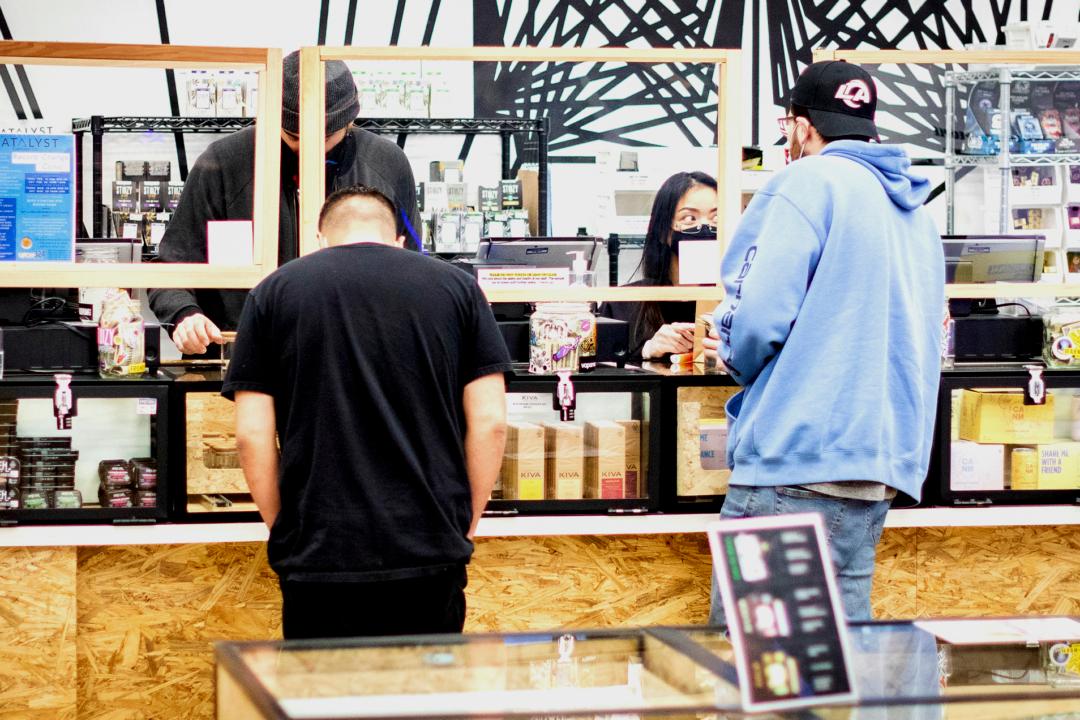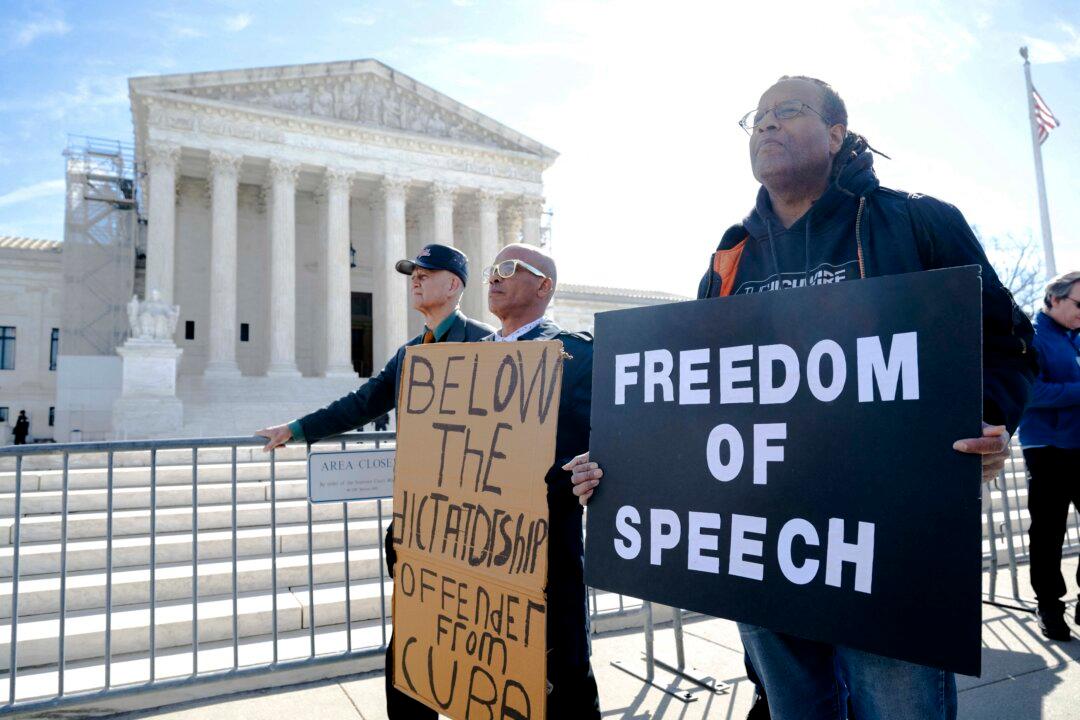April Babcock is a grieving mother on a mission—to save others from the pain she experienced on Jan. 26, 2019, when her son, Austen, took what he believed was cocaine. Unbeknownst to him, it was laced with a lethal dose of illicit fentanyl. He died shortly after.
Andrea Thomas, a counterfeit drug victim family advocate and one of the founders of Voices for Awareness, told The Epoch Times that the actual number is closer to every seven minutes.
Narcan, which is a four-milligram naloxone hydrochloride nasal spray, can rapidly reverse the effects of an opioid overdose.
The FDA stated that it’s “the first naloxone product approved for use without a prescription.”
“Today’s action paves the way for the lifesaving medication to reverse an opioid overdose to be sold directly to consumers in places like drug stores, convenience stores, grocery stores, and gas stations, as well as online,” the FDA said in a statement.

In response, Babcock told The Epoch Times: “I totally approve of it being over-the-counter for everywhere.
“Narcan is the only lifesaving tool we have right now to combat this. For me, it’s no different than the Heimlich maneuver. If you see someone choking, you’re going to want to give them the Heimlich. Well, if you see someone overdosing, you’re going to want to give them Narcan. It’s a lifesaving tool.”
Still, she noted that the FDA’s approval amounts to little more than a Band-Aid on a much bigger crisis.
“[Narcan] should be in every hotel, every building, and every school. I think it needs to be everywhere. Like I said, it’s a lifesaving tool,” Babcock said. “But at the end of the day, and I say this all the time, we’re not going to Narcan our way out of a fentanyl crisis. Our government needs to do something different, something they have not yet done.”
Thomas agrees with Babcock.
“It’s always great to have as many tools as you can in your toolbox, right?” she said. “Naloxone needs to be easily accessible. ... It’s sad that we’ve gotten to this point that that’s even something that we have to look at.”
But like Babcock, Thomas said: “I think our federal government really needs to step up to the plate. They’re way behind. Not only is it a public health crisis, it’s a national security crisis. You know, the precursors come from China.”
Like Babcock, Thomas is on a mission to raise awareness about the dangers of fentanyl. On June 11, 2018, her daughter, Ashely Romero—who struggled with pancreatitis and chronic pain—took what she believed was a prescription painkiller from her boyfriend. Unbeknownst to Romero, the pill wasn’t prescribed and contained a lethal dose of fentanyl.
She died shortly after.
Fentanyl’s Origin
When Thomas and Babcock warn about fentanyl, they aren’t talking about the pharmaceutical fentanyl prescribed to treat severe pain—often post-surgery and for advanced-stage cancer. Instead, they’re talking about illicit fentanyl found in counterfeit pills, with ingredients that originate in China.Before 2019, “China was the primary source of U.S.-bound illicit fentanyl, fentanyl-related substances, and production equipment,” and these were delivered via international mail, according to a Congressional Research Service report from Dec. 8, 2022.
But, in May 2019, at the United States’ urging, China implemented trafficking controls for fentanyl-related substances. That stemmed direct flows to the United States.
“Today, Mexican transnational criminal organizations (TCOs) are largely responsible for the production of U.S.-consumed illicit fentanyl, using [China]-sourced primary materials, including precursor chemicals that are not internationally controlled (and are correspondingly legal to produce in and export out of China),” the report reads.
Chinese traffickers and money launderers have increased cooperation with Mexican cartels in recent years, according to assessments by the Drug Enforcement Administration (DEA).

Babcock believes that tackling the fentanyl crisis starts with addressing China.
“The Biden administration has been doing things recently that are good things. Like more machines at the border at the ports of entry [to search vehicles], that’s good. The Narcan, that’s good. I know they just got social media influencers to start spreading awareness, which is great,” Babcock said.
“But all three of [those] things are just really a Band-Aid. They’re ... doing nothing about China, and they’re doing nothing about the Mexican cartels. Why don’t they go after China? Why don’t they shut down their pharmaceutical labs? Why isn’t that happening? How hard is it to label the cartels a foreign terrorist organization? That gives our government tools to actually start shutting the cartels down. That’s what needs to happen!”
Thomas concurred with Babcock’s assessment.
“I’ve done focus groups with people that tell me the first time that they used heroin that was made with fentanyl, they didn’t know that’s what they purchased,” Thomas said. “It smelled the same, burned the same, all those things, except that the high was so different.
“And then, when they realized that it had fentanyl in it and went to use regular heroin, they couldn’t even get high from regular heroin. ... So the cartels have perfected it.
Addressing the Crisis
In addition to addressing the origins of fentanyl, Thomas believes that prevention education needs to become a bigger priority for society. She pointed out that just one experience with fentanyl can result in an addiction that’s more insidious than heroin.“For youth, it’s a totally different world, a totally different drug landscape,” she said. “I mean, you can flood the United States with a supply of any drug, but if we can be successful with prevention, it won’t even matter how much is in front of us. So that’s the most important thing. It’s what we have within our control to some degree, right? To go out and teach prevention while we wait on this legislation, for laws to change.”
“I feel like [the government is] focusing on the recovery and treatment. They’re not focusing on the first-time users or recreational users, who may come across it in a pill or cocaine,” Wendy Thomas told The Epoch Times. “So we’re losing all of these people that are not aware of it. And there’s nothing out there warning the public about it.”
Matthew Thomas, Wendy’s son, took what he believed was Percocet, a prescription drug for pain relief, on July 25, 2020. He died moments later, a victim of fentanyl poisoning. Wendy Thomas now travels to schools throughout North Carolina, warning students that as many as 6 out of 10 pills contain a lethal dose of fentanyl.
Still, others argue that addressing the fentanyl crisis first involves addressing mental health. Deric and Kathy Kidd believe that the FDA’s approval of over-the-counter Narcan is a step in the right direction, but similar to others, she thinks there’s something missing.
“I think it’s good for anybody to have it on hand,” Deric Kidd told The Epoch Times. “I can show you numerous posts and stories where somebody had to administer [Narcan] that wasn’t a first responder. So it’s just, unfortunately, the day we live in.

“There’s more to it than just the opioid crisis itself. What we do, we focus a lot on mental health issues. There is a lot of judgment out there. There are a lot of things that these kids and people are going through and have gone through. Addiction has developed because of that. I think we’re missing the point. We’re missing the reason they’re engaging in this behavior in the first place.”
Kathy Kidd said: “We seem to be focusing a lot of time on the end piece. Reacting rather than being proactive. I think we need to start much younger. At home, talking about mental health, as well as in schools. I think it needs to start a lot younger.”
“[The escalating mental health crisis in youth] has been a progression over the last couple of decades,” Deric Kidd said. “We’re all to blame. All of us. ... We glorify drug use. We glorify certain lifestyles. You know, our kids bury their heads in their phones and their tablets, and we don’t have the connection with families anymore. I mean, you name it. Our society has done this to our children. We’ve done this to ourselves.”
Fentanyl and Narcan
For the 12-month period that ended in October 2022, the FDA reported more than 101,750 fatal overdoses in the United States, many due to illicit fentanyl.
FDA Commissioner Dr. Robert M. Califf said in a statement, “We encourage the manufacturer to make accessibility to the product a priority by making it available as soon as possible and at an affordable price.”
The FDA has cautioned that while Narcan is a critical tool for when someone overdoses, its use may result in severe opioid withdrawal symptoms if the patient is opioid dependent. Symptoms include increased heart rate, increased blood pressure, diarrhea, nausea or vomiting, and several others.





